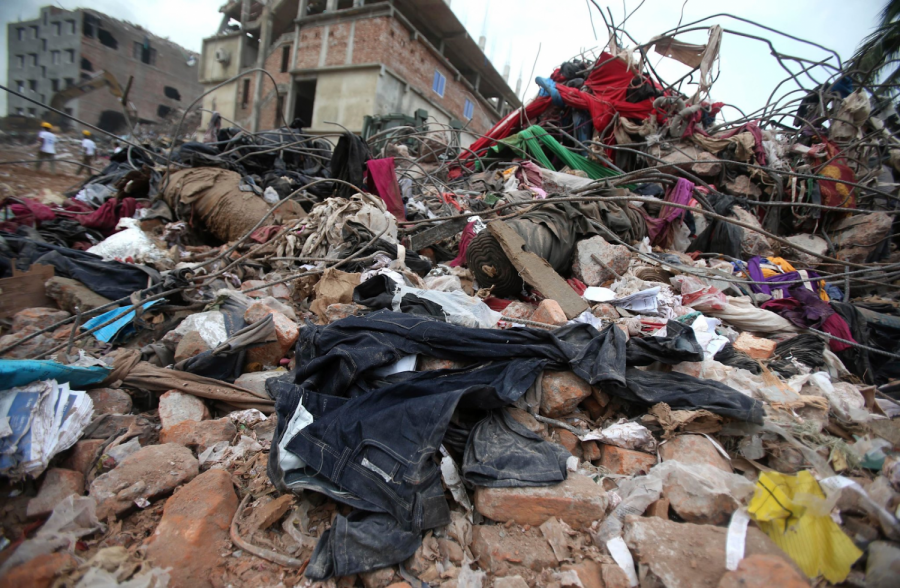Fast Fashion isn’t Pretty
Fast Fashion is quickly polluting the planet; together we can slow it down.
With many people starting to shop for summer clothing, you may start to wonder how so many trendy looks can be so affordable. Fast fashion is the explanation. According to earth.org, the phrase means “cheaply produced and priced garments that copy the latest catwalk styles and get pumped quickly through stores in order to maximise on current trends”. The purpose is to have the latest designs on the market as soon as possible, so more consumers snatch the look in the prime of its popularity. Eventually shoppers typically scrap the items after a couple of wears, which plays into the common fashion flaw that you have to wear the newest looks just as they come out.
Fast fashion is quickly becoming more prevalent in discussions regarding its global impact. “The fashion industry cannot continue to operate in the way it does currently; our planet doesn’t have the resources,” said Giorgina Waltier, sustainability manager for H&M in the UK and Ireland according to Vogue.com.au.
According to businessinsider.com, it takes about 700 gallons of water to produce one cotton shirt and it takes about 2,000 gallons of water to produce a pair of jeans. Additionally, manufacturers use synthetic fibres like nylon, acrylic, and polyester which would take hundreds of years to decompose. Earth.org scites a 2017 report from the International Union for Conservation of Nature (IUCN) which “estimated that 35% of all microplastics- tiny pieces of non-biodegradable plastic- in the ocean come from the laundering of synthetic textiles like polyester.”
Earth.org reports “the production of making plastic fibres into textiles is an energy-intensive process that requires large amounts of petroleum and releases volatile particulate matter and acids like hydrogen chloride”. Moreover, cotton, which is in a sizeable quantity of these items, is also not particularly eco-friendly to produce. It is a key part in the destructive system of consumption and overproduction that has made fast fashion one of the world’s most substantial polluters.
Many fast fashion brands have contributed heavily to the decline of our environment. H&M designed a more environmentally conscious collection, but according to theprettyplanteer.com, the collection uses more sustainable materials, but blends them with other fabrics to keep the prices low. Once you realize you can’t recycle blended fabrics, it is easy to see this collection is not a solution.
Like many companies in the fast fashion industry, Forever 21 is known for their unethical practices in their factories. Theprettyplanteer.com reports the garment workers at these brands earn based on the number of items they produce instead of earning an hourly rate. Which is not the whole problem. The real problem is that they get such a little amount per garment that even an experienced seamstress can’t earn more than around 5-6 dollars per hour.
Although there are many negative elements in the fast fashion industry, some companies have been hard at work to find ways to stop the problem. Vogue.com.au reports that Zara wants 100 percent of cotton, linen and polyester to be sustainable by 2025, and 100 percent of viscose by 2023. Vogue.com.au also says H&M 100 per cent of materials and products to be recycled or sustainably sourced by 2030.
What the brands are doing is a start, and you can help out, too. Thrift shopping, donating, making your own clothes, or simply just buying less are all amazing ways to help the planet.
Remember, the state of our planet is up to us. Once you know better, do better.




Ronda Stewart • Jun 1, 2021 at 10:43 pm
Awesome article!